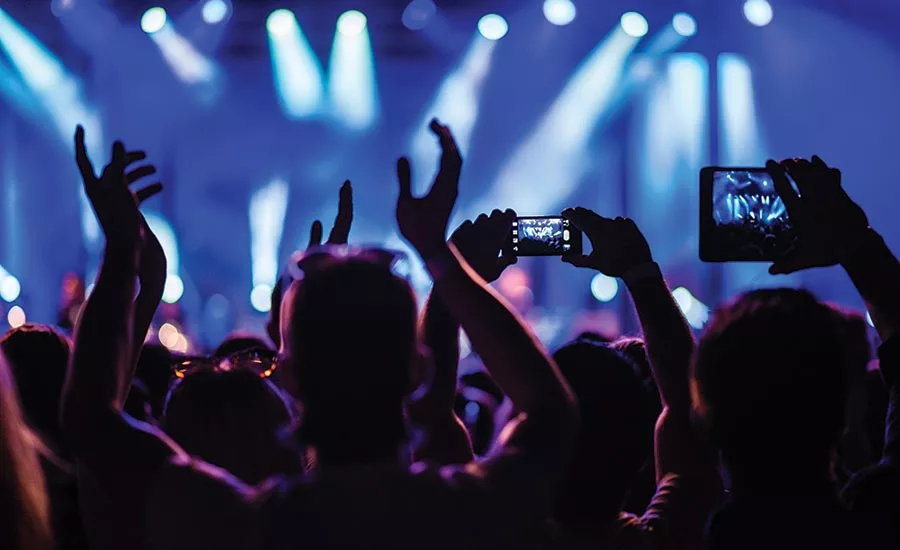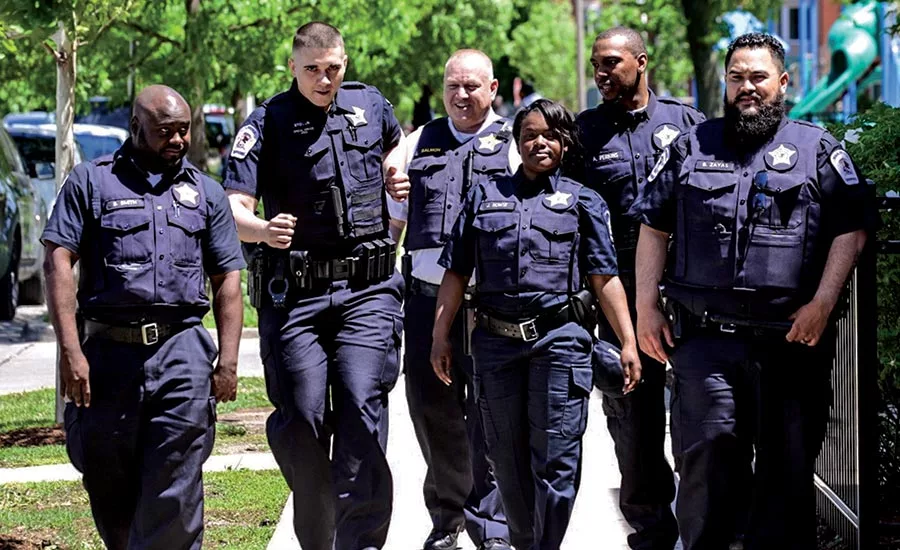Securing Soft Targets and Crowded Places
How can enterprise security secure soft targets and crowded places without intruding on the entertainment aspect of events?


“Ideally, both private and public sectors need to bring their resources, task forces and academia to share information to stay informed by creating a Special Event Working Group to develop guiding principles with a common mission to better serve soft targets.”
Photo courtesy of John Griffin, Jr.

“Knowing that security professionals are often the first responders, we develop security aptitude to recognize the early signs of an attempt to mitigate risk or loss of life,” says John Griffin, Jr. of AGB Investigative Services.
Photo courtesy of John Griffin, Jr.
Mass casualty terror attacks, such as the Ariana Grande concert in Manchester, United Kingdom, in May 22, 2017, the October 1, 2017 Route 91 Harvest music festival on the Las Vegas Strip, Nev., and the Walmart shooting on August 3, 2019 in El Paso, Texas, have left civilians questioning whether attending an event in a crowded place is safe.
Six in 10 Americans are now more worried about themselves or a family member being the victim of a mass shooting than ever before, according to a 2019 Gallup survey, Americans’ Level of Worry Being a Victim of Mass Shooting. Gallup conducted the survey on August 15, 2019, less than two weeks after back-to-back shootings in a 13-hour period: nine people were killed in Dayton, Ohio, and 22 were killed in a Walmart store in El Paso, Texas.
A 2019 American Psychological Association (APA) report similarly found that 33 percent of U.S. adults say fear of being a victim of a mass shooting prevents them from going to certain places, such as a mall (50 percent), school or university (42 percent), movie theater (38 percent) and a public event (53 percent).
“Mass shootings are a public health issue, and we need to take a comprehensive public health approach to understand and devise lasting policy solutions,” says Arthur C. Evans Jr., PhD, APA’s Chief Executive Officer. “It is important that people and policymakers realize that this is not an insurmountable issue; it is something we have the power to change.”
Addressing Security Challenges
Enterprise security can play a key role in shifting the public’s perspective on public events, says John Griffin, Jr. of AGB Investigative Services in Chicago, Ill. The answer is by ensuring that a comprehensive security plan is in place and that the security professional continuously trains on new threats, he says.
Griffin is a certified forensics expert who co-founded AGB in 2001, and has been involved in high-level security protection (both physically and virtually), vulnerability assessments and investigations for 18 years. He has extensive local and national experience. He received his training from the Department of Defense, the Department of Homeland Security (DHS) and the U.S. Secret Service.
For example, similar to all cities throughout America, the city of Chicago hosts many neighborhood events that are free to the public, yet come with unpredictable crowd sizes, says Griffin. During the summer, especially, the city hosts events such as the Millennium Park Summer Music & Film series, where attendees can grab a seat in the pavilion or bring a picnic, enjoy outdoor movies and concerts at Chicago’s architectural gem – the Jay Pritzker Pavilion. Other free events where large crowds gather include the Annual Taste of Chicago, Chicago Summerdance, the Annual Chicago Air and Water Show and the World Music Festival.
“Security firms have served the cities like Chicago and its residents with many security services, from providing access control, bag checks, magnetometer scanning, plain clothes surveillance, to armed patrol, helping to ensure the safety of patrons who attend the events hosted by the city,” says Griffin.
“Many of these events have unprotected perimeters, and they require strategic planning on how to maintain a line of sight to recognize would-be bad actors,” he notes. A challenge in securing a crowded place is that security professionals are only able to control their sphere of influence, he says. “The security executive can only react to the scope of his or her purview, as they can only see 5,000 linear feet in each direction,” he adds. “Clients who are budget-conscious limit the security details’ ability to properly staff an event to include all the attributes that are recommended in order to ensure security is available in a variety of ways to provide the most comprehensive coverage.”
Budget constraints or not, to ensure the protection of a “soft target,” technology and strategic planning is required to gather information, quickly detect vulnerabilities, respond to risks and eliminate threats, thus providing a fun and safe environment to anyone attending a public event, he says.
Those attendees are a “soft target” – a person or thing that is relatively unprotected or vulnerable and can encompass electric grids, railroad tracks, water supply, gas supply, public transportation, banking, manufacturing or places of worship, says Griffin. “Soft targets and crowded places, such as sports venues, shopping venues, schools and transportation systems, are locations that are easily accessible to large numbers of people and that have limited security or protective measures in place making them vulnerable to attack,” he notes.
Solutions to Securing Soft Targets
Griffin says some aspects to consider when securing both soft targets and crowded places include:
- Creating a Special Event Working Group.
- Evaluating Special Event Readiness Levels (SERL).
- Determining the Special Event Readiness Assessment Ratings (SEAR).
- Developing an emergency preparedness plan.
Security professionals should consider insider threats and vulnerabilities, and ensure the comprehensive security plan is realistic, he notes. Griffin explains that a carefully considered, realistic and inclusive security plan takes into consideration SERL, which includes:
- Size of the event (and resources available in the field office).
- Threat - includes known threats to the event, current levels of domestic and global terrorist activities, and the realistic degree of danger that known terrorist groups may pose to the event.
- Significance - some events have historical, political and/or symbolic significance that may heighten concerns about the event being a target.
- Duration - events lasting for extended periods of time require more resources.
- Location - certain locations may be more inviting for attacks; the geographic dispersion of an event is also a factor.
- Attendance - who is attending (cultural, political and religious backgrounds).
- Media coverage - events with national or international media coverage may provide an inviting stage with a large audience for attackers to make a “statement.”
- Dignitaries - high-level heads of state and VIPs require more protection and resources because they often are targets for attacks.
Griffin utilizes a SEAR approach, which the DHS Office of Operations Coordination says is a risk-based methodology that considers threats, vulnerabilities and consequences for the event. The event may receive one of the following SEAR ratings:
- Level 1 - Significant events with national and/or international importance that require extensive federal interagency support.
- Level 2 - Significant events with national and/or international importance that may require some level of federal interagency support.
- Level 3 - Events of national and/or international importance that require only limited federal support.
- Level 4 - Events with limited national importance that are managed at the state and local levels.
- Level 5 - Events that may be nationally recognized but generally have local or state importance.
A comprehensive security plan should also consider the use of various specialized security services to further provide safety and security, such as explosive detection canines and handlers, mounted units, bicycle units, crisis management units and other units, as well, says Griffin.
Griffin also follows an U.S. Department of Justice guideline, Planning and Managing Security for Major Special Events, that dictates that after an event, it’s necessary to conduct an assessment of:
- The functions and activities that occurred during the event.
- The type of security that was implemented.
- What security actions were done correctly and worked.
- What security actions were implemented incorrectly, the reasons why and the consequences.
- Make final recommendations for what should be retained and changed for security at future events.
Public vs. Private Sector
One challenge that many security firms face is helping clients and potential clients understand the need to secure a soft target, Griffin says, as they may generalize security and defer to law enforcement for consultation and coverage. That’s not a solid solution, he notes, as “Law enforcement’s first priority is to municipal public safety, and if an event was to occur in the municipality, they would be coerced to redeploy to provide public safety.”
“When clients use experienced private security, the first priority of the event is security,” Griffin contends. “Using multiple looks, security can assimilate into crowds to look like the attendees, and listen and watch situations as they manifest during the festivities.” By looking like any other attendee, private security can blend in without distracting from the fun and entertainment around them, he adds.
However, Griffin recognizes the need for both public and private security to come together for the benefit of securing the soft target. “The soft target for both public and private is the same,” he adds. “The available resources to thwart the threat differ as the public sector has law enforcement, where the depths of coverage protection are far greater than the budgets of the private sector.”
He suggests many ways in which the public and private sector can work together to better secure soft targets and crowded places. When working together, information sharing is pertinent, Griffin says. “Ideally, these sectors need to bring their resources, task forces and academia to share information to stay informed by creating a Special Event Working Group to develop guiding principles with a common mission to better serve soft targets.”
Primarily, Griffin says that it is imperative for security professionals to continue to hone skills, both physical and technical. “Not only do you train on new threats, but you need to learn about technology to stay abreast of new threats.”
To ensure the safety of customers, staff and soft targets, as well as maintain overall business continuity against everyday threats, it’s of great value for security executives to “make sure they train, train and then train some more.”
Looking for a reprint of this article?
From high-res PDFs to custom plaques, order your copy today!




.webp?height=200&t=1638201156&width=200)
